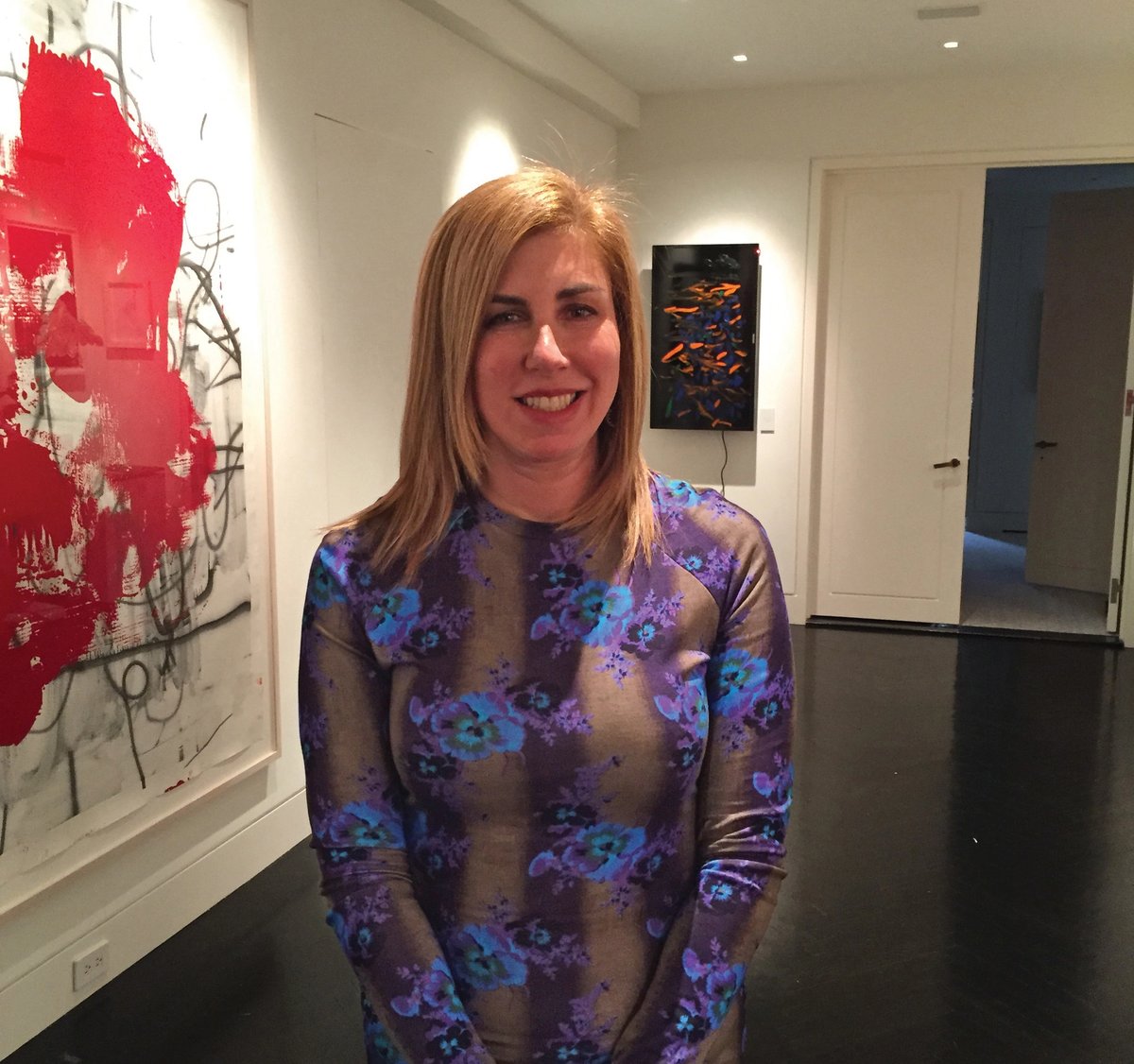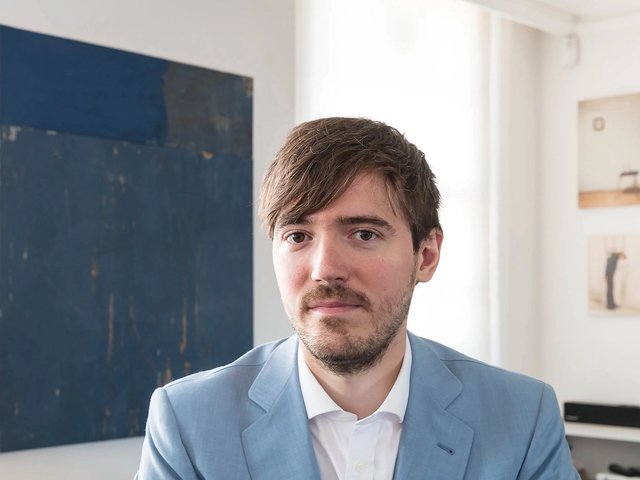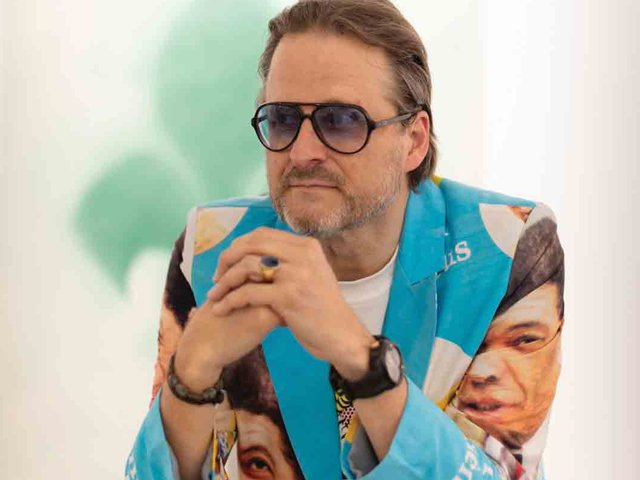The New York real estate heiress Candace Carmel Barasch, an energetic collector of contemporary art, is intent on exploring what The Armory Show has to offer. We talked to her about her beginnings as a collector and her passion for art.
The Art Newspaper: Tell us how you started collecting.
Candace Carmel Barasch: I will maintain that all collectors have collected something in their past–whether it be baseball cards, stamps, something. “Collectors have always collected” is my motto. But in terms of art, I was collecting black-and-white photography with my husband. It’s all we could ever agree on. And when we moved into our apartment, our photography collection pretty much filled our dining room. I didn’t really plan to collect, but I went to auctions and to look in galleries, and all of a sudden, 15 years later, here I am.
Are there any standouts you would highlight among your photography purchases?
Diane Arbus, Weegee, Lewis Hine, Gregory Crewdson, André Kertész and Hiroshi Sugimoto, who is more of a contemporary photographer. I really do love, love, love the photography still. And that morphed into more contemporary photography, such as William Eggleston, and then all of a sudden I was collecting all different media—paintings, sculpture, works on paper, digital media. My collection is really cutting-edge contemporary art. When I think about art, I think of it as the great philosopher, and that in form and content it reflects what’s happening in the world today. So I think of my collection as a snapshot of history.
What works have you bought recently?
I bought a Sam McKinniss installation from Almine Rech Gallery, and an Ella Kruglyanskaya from Gavin Brown. I bought a Sanya Kantarovsky, an Anicka Yi and some Alex Da Corte pieces.
Would you like to highlight any of your favourites?
I wouldn't want to highlight a work as a favourite work because like asking who's your favourite child. So all the art that I collect in a way references the current historical situation, like the Fourth Industrial Revolution. I'm very interested in the cultural impact of the Internet and how it's transformed art. So that is something that I'm interested in. There are definitely threads to my collection. My post-photography collection started with works by artists who have come to be known as Painting Factory artists, and that was a MoCA [Los Angeles] show in 2012, and the term was coined by Jeffrey Deitch. Artists such as Wade Guyton, Kelley Walker, Seth Price. There’s also Tauba Auerbach, Sterling Ruby, Laura Owens. I'm a little bit priced out of a lot of them. But Seth Price is a good thread between the Painting Factory artists and then the post-internet artists.
Figurative work is definitely having a moment, and I've been collecting a lot of it. Artists who represent the figurative movement are Ella Kruglyanskaya, Janiva Ellis, Jamian Juliano-Villani, Tala Madani, Avery Singer, Rob Pruitt. And artists such as Josh Kline, Anicka Yi, Tabor Robak, Antoine Catala, Cory Arcangel who use technology to explore various technological impacts on society, like what is going to happen when automation takes over whole industries, what happens with AI.
Is there any area in which you’re longing to collect but haven’t?
No. I mean, sure, would I love to wake up every morning and look at a Mark Rothko? Probably, but that’s never to be. I love my collection; I love the artists I collect. I’m very close to a lot of them. I do studio visits—I make informed decisions. I use an art adviser, Lisa Schiff.
My Longo portrait of Obama 'now seems almost erudite'
Are you going to The Armory Show?
I am definitely visiting The Armory Show. I will have been to Frieze London; Art Basel in Miami Beach; Frieze Los Angeles, which showcased one of my all-time favourite artists, Alex Israel. He lives there, and he reflects on the culture of Hollywood, tapping into its stardust, suspension of beliefs—I like to call it Hollywoodification. He's known for his sky paintings, very garish sky paintings, [and] his self-portraits—like, what is portraiture in a culture of narcissism? He deals with that specifically.
Where do you normally head in the sprawling Armory Show?
Well, I don’t usually buy in the older section, but it’s beautiful—not to be missed—always some treasures to see there. In terms of the more contemporary, I always love that there’s a lot of art to see at one time.
Do you collect any overtly political art?
I do have some overtly political art, yes—not necessarily to make a statement per se, but it is certainly part of what’s going on today. I have a video of [Barack] Obama by Josh Kline that was shown in the New Museum Triennial—not the last one, the one before that. It’s kind of an imagination of what we wish he talked about in his inaugural address. I have a Robert Longo portrait of Obama, and when you see it now—I mean, it was beautiful at the time, but when you see it now, he seems almost erudite.
You mentioned that you visit artists’ studios. Have you built any direct relationships with these artists?
I have tremendous relationships with the artists, but not in a way to bypass a gallery or anybody. It's just that I'm so interested. I was at Anicka Yi's studio last week because I'm helping to support her showing at the Venice Biennale. I will be supporting three artists this year at the Biennale.

Collector Candace Carmel Barasch with Alex Israel—one of her favourite artists Courtesy of the collector
Do you do that regularly?
Yes, and that's actually the thing that I love to do the most. I'm on the board of the Sculpture Center, the painting and sculpture committee at the Whitney [Museum of American Art], the Mead advisory board at Amherst College, and I'm involved at the University of Michigan Museum [of Art] because I am trying to bring contemporary art to college campuses, and my kids are at University of Michigan and Amherst College, so that's just a start. But in terms of supporting artists’ shows, I have supported I think now four shows at the Whitney.
Is all of this work all on view in your apartment in New York? Or is some of it in storage?
I have work in my apartment and in my home in Connecticut, and I also have work in storage. But I always lend my work whenever asked.
And have you lent to museums?
Oh, yes. I've lent multiple works to museums. It's important to get the work out there. It doesn't do much in my storage facility; I am the guardian of work for a short period of time.
Did you grow up around art?
Yes, I did, but Impressionist art. I loved it. My father was [a collector].
Was there any piece in particular that still speaks to you?
Interestingly, it wasn't all contemporary. He had a Giacometti sculpture, which I was obsessed with.
If money were no object, what would your dream purchase be?
Maybe a big beautiful Ed Ruscha text piece. What else? A work by [Edward] Hopper.
Are there any purchases that you now consider ill-advised? Any regrets about the directions in which you've gone?
I think everybody's taste changes sometimes, but again, I'm not necessarily buying art that's just pretty or fits the house or something like that, so I don't really feel that way because I feel like it's telling a story—it's part of what's happening today.
So nothing has been lowered, in your estimation, by time?
No, I think maybe that's like a market-driven question, and I don't really think about the market.
Do you have any advice for collectors who are just starting out?
Yes, buy what you love.
Would you advise them to go to art fairs?
Absolutely. It's a great way to see a lot of art in a small amount of time. Depending on where you live, going to see art can be very difficult. In Los Angeles, everything is so far apart and there's so much traffic, so it's hard to see a lot. I would recommend getting a lot of different publications, seeing a lot and going to auctions—not necessarily to buy but to see things that maybe haven't been [seen] in public in years.
I've already asked you if you had a favourite work, and you said you didn't want to choose a favourite. But if your house were on fire, which work would you save first?
Well, Alex Israel made me a present for my 50th birthday, so it would have to be that: McLovin’–you know, from Superbad, the movie. He made two; one for him, one for me. So, it’s the most obviously sentimental. So yes, if there was a fire, that's definitely what would come off the wall.
Do you have any other advice for people visiting the Armory Show?
[There’s] a great device for new collectors: a price-checking app called Magnus, and it's just really interesting to get an idea of secondary-market works and to really just get an idea of what things should cost. It's the most comprehensive app with the most art, the most prices. And they say knowledge is power.
Do you have a global view of fairs? Do you think that they're good for the art world? Or do you think they've run amok?
I think there are too many obviously, and I think it's a big strain on the galleries, on the artists. I mean, these are creative people. It's really hard to make work on demand. They have shows. One of the fairs that I really happen to love in New York is the ADAA [the Art Show], because the stands are usually curated with one artist. Because often when you have a sampling of lots of different artists, it's just hard to get an idea of their context. So I think art fairs are great—alongside galleries, not in lieu of galleries.
And is there anything you'd like to say that I haven't posed a question about?
This is very important to me: I feel like it's a very big responsibility to be a collector like myself, and I'm a guardian of work that means a lot to these artists. They spend a lot of time and effort in putting this work out into the universe, and I like to think that they know it's safe when it's in my hands.




